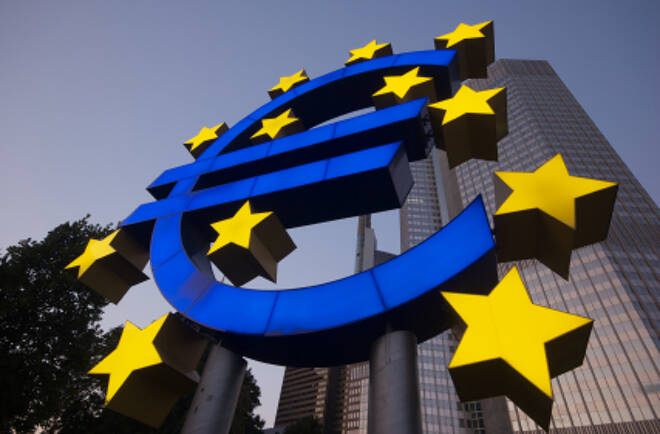Advertisement
Advertisement
EUR/USD Daily Technical Analysis for July 4, 2017
By:
The Euro gave back some of its recent gains as ECB officials attempted to talk down Draghi’s hawkish tone. The stronger than expected U.S. ISM
The Euro gave back some of its recent gains as ECB officials attempted to talk down Draghi’s hawkish tone. The stronger than expected U.S. ISM data lifted the dollar, as well as, U.S. yields which took some of the luster off of the currency pair. The U.S. is closed on Tuesday for the July 4 Independence Day, holiday, which should turn trader’s attention to Friday’s payroll report.
Technicals
The EUR/USD turned south, giving back some of the gains seen last week. The exchange rate gave up the 1.14 handle and is currently trading near former resistance near the August 2016 highs at 1.1360. Support on the currency pair is seen near the 10-day moving average at 1.1276. Positive momentum is decelerating as the MACD (moving average convergence divergence) histogram is printing in the black with a flattening trajectory which points to consolidation.
Eurozone jobless rate steady at 9.3% in May. Jobless rates have come down considerably and labor markets are improving across countries, although so far that hasn’t lifted wage growth significantly and high youth unemployment in countries such as Spain, Italy and Greece remains a key challenge for policy makers.
U.S. ISM Manufacturing Hit a 3-year High
U.S. June ISM manufacturing index rose 2.9 points to 57.8, much stronger than expected, after inching up 0.1 point to 54.9 in May. It was 52.8 a year ago. This is now the highest for the year as it was 57.7 in February, and is the best since 57.9 in August 2014. The employment component jumped to 57.2 from 53.5, though is still just off the 58.9 in March, which was the peak since mid 2011. New orders climbed to 63.5 from 59.5. New export orders rose to 59.5 from 57.5. Prices paid fell to 55.0 from 60.5 and is the lowest since November. It was as high as 70.5 in March.
Eurozone June PMI was Revised Higher
Eurozone June manufacturing PMI revised slightly higher to 57.4 from 57.3 reported initially. The rise from 57.0 in May confirms the renewed acceleration in the pace of expansion in the sector, and Markit reported not only that growth rates improve in the majority of Eurozone nations, but also that Greece returned to expansion, which is encouraging. Job creation meanwhile stayed close to the record from May Production and new orders expanded at the quickest rates since the opening half of 2011, suggesting ongoing growth ahead and adding to the arguments for the ECB to starting taking the foot off the pedal once the current QE schedule ends at the end of the year.
Mersch and Weidmann defend ECB policy. Executive Board member Mersch said at an open house event at the Bundesbank’s headquarters in Frankfurt that while the ECB’s policy has helped the economy, “this movement is not yet self-sustained, that is why we need to have patience with this policy”. Weidmann meanwhile said that “we see that the economic situation is rather positive”, adding that “if tis sustainably passes on to inflation rates then monetary policy needs to be more taut”, while stressing that “its not about putting full brakes on monetary policy, but to lit one’s foot off the gas a little”. Weidmann also said over the weekend that the council is united in its assessment and an expansive policy is still needed, thus putting his weight behind he ECB’s decision, even if he seems more eager to start taking the foot off the brake than others.
U.S. Markit PMI Fell
U.S. Markit PMI fell 0.7 points to 52.0 in the final June reading (52.1 for the preliminary) after dipping 0.1 point to 52.7 in May. It was 51.3 last year. This is the lowest since September. The 55.0 print in January was the best since early 2015. The loss in momentum is a function of new order growth which has eased for a fifth straight month. Employment growth also slowed, though it’s been positive for four straight years. Meanwhile, cost pressures are also weakening amid the drop in commodities and were at the softest level in 15 months.
U.S. Construction Spending was Flat
U.S. construction spending was unchanged in May after sliding 0.7% in April which was revised up from -1.4%, which was the first and only decline of the year and March was revised down to 0.3% from 1.1%. Residential spending dipped 0.5% from a 0.3% gain which was revised up from -0.9%. Nonresidential spending rose 0.3% from -1.5% which was revised from -1.7. Private spending declined 0.6% from -0.2%. Public spending increased 2.1% from -2.7%.
About the Author
David Beckerauthor
David Becker focuses his attention on various consulting and portfolio management activities at Fortuity LLC, where he currently provides oversight for a multimillion-dollar portfolio consisting of commodities, debt, equities, real estate, and more.
Advertisement
